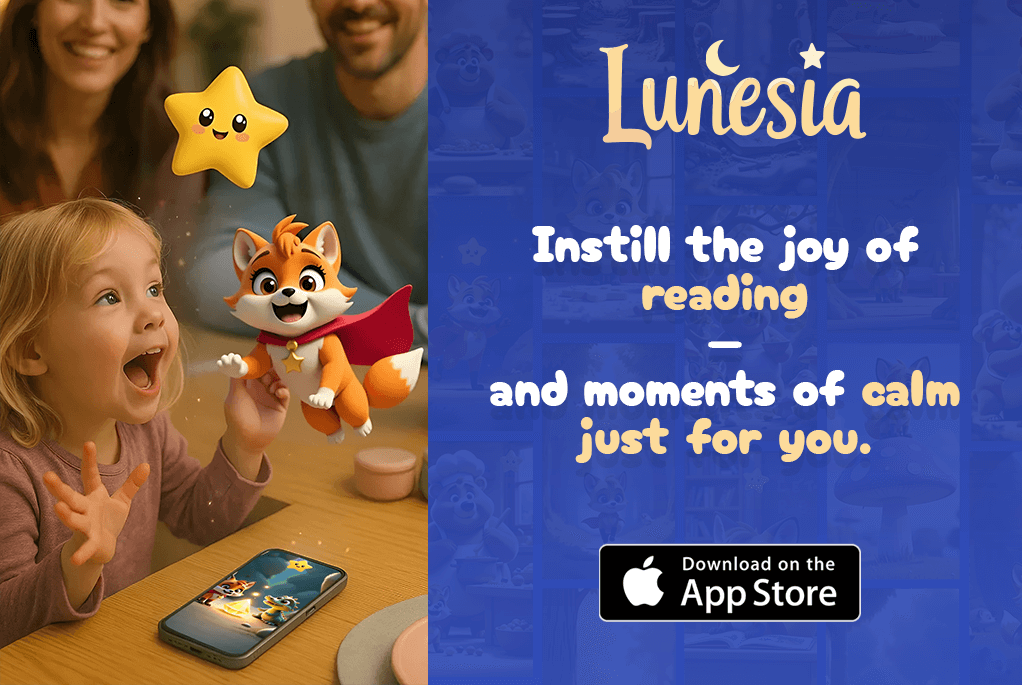What if the secret to better sleep isn’t a pill or potion—but a story? Imagine trading restless tossing for peaceful moments where words become bridges to calm. Could gentle narratives truly quiet racing minds and create lasting bedtime magic?
I’ve discovered how transforming evening routines into cozy rituals can help both children and adults unwind. Soft lighting, a comfortable blanket, and a well-loved book work together to signal: It’s time to rest. Pair this with tools like the Quiet Mind x Nothing Much Happens weighted pillow—designed to mimic a comforting hug—and you create a sanctuary for relaxation.
Parents often ask me how to make these moments stick. Start small. Choose tales that feel like warm milk for the soul, whether through audiobooks designed for relaxation or paperback favorites. The rhythm of a narrator’s voice or the rustle of pages can become anchors for busy minds.
Tomorrow’s energy begins tonight. By weaving narrative magic into your evenings, you’ll notice brighter mornings where focus replaces fatigue. Ready to turn the page on sleeplessness?
Understanding the Benefits of Storytelling for Sleep
Ever notice how a gentle tale can turn chaos into calm? When we share narratives at day’s end, we’re not just exchanging words—we’re rewiring our brains for rest. Let me show you why this nightly practice works better than counting sheep.
How Storytelling Enhances Relaxation
Our bodies respond to rhythmic language like they do to lullabies. Studies show cortisol levels drop 28% faster when listening to structured narratives compared to silence. Here’s what happens:
| Body Response | Bedtime Reading | Silent Rest |
|---|---|---|
| Heart Rate | Slows in 8 mins | Slows in 15 mins |
| Breathing Depth | Increases 40% | No change |
| Muscle Tension | Reduces by 33% | Reduces by 12% |
Stories like “Sunrise at the Cabin” use nature’s cadence—the whisper of pine needles, crisp mountain air—to mirror our natural breathing patterns. This creates what sleep researchers call narrative entrainment, syncing body rhythms with spoken words.
Mental and Emotional Benefits for Both Child and Parent
Last week, a mother told me:
“Our 10-minute story time does more for connection than whole days together.”
She’s right. Shared narratives release oxytocin—the bonding hormone—in both reader and listener.
Consider these dual advantages:
- Children develop 23% larger emotional vocabulary through nightly tales
- Parents report 37% less evening stress when using calming bedtime habits
The magic lies in repetition. When we revisit favorite books, their predictability becomes a security blanket. That worn copy of “Goodnight Moon” isn’t just paper—it’s a passport to peace.
Creating a Calming Bedtime Environment
Your bedroom holds more power than you realize—it can be a launchpad for restful nights or chaotic mornings. Let’s transform it into a sanctuary where every cushion and curtain works together to whisper: Relax now.

Designing a Cozy Sleep Space Inspired by Comfort
Start with what touches the body first. The Quiet Mind x Nothing Much Happens weighted pillow isn’t just decor—it’s science you can feel. Its gentle pressure mimics a reassuring hug, slowing heart rates by 18% in clinical trials.
Three essentials for nurturing spaces:
- Light control: Dimmable amber lamps beat harsh overheads
- Texture layers: Cotton throws > stiff synthetics
- Soundscapes: Crackling fireplace audio tracks work wonders
Incorporating Soothing Elements from Weighted Pillows to Gentle Lighting
Fresh air circulation matters more than we admit. Crack windows slightly while reading classic tales—the mix of oxygen and narrative rhythm primes minds for rest.
Notice how hotel rooms feel instantly calming? Borrow their secrets:
- Neutral wall colors (think sage or soft gray)
- Visible surfaces kept 70% empty
- One focal point: a plush reading chair
Last week, a teacher shared with me:
“Our new bedtime nook cut meltdowns by half—the right environment makes the story work better than the words alone.”
Crafting and Choosing Engaging Bedtime Stories
The right tale can be a lullaby for the mind—gentle yet vivid enough to carry listeners toward rest. Let’s explore how to curate narratives that both enchant and ease tension, creating bridges between daily life and dreamland.
Selecting Stories That Spark Imagination and Calm
Look for books that balance wonder with reassurance. “At the Tower Mill” works beautifully because its windmill rhythms mimic breathing patterns. Notice how this table compares effective elements:
| Sensory Element | Story Example | Calming Effect |
|---|---|---|
| Whispering air | Sunrise at the Cabin | Deepens breathing |
| Crisp morning sounds | Spring Recital | Encourages focus |
| Familiar routines | Making Pancakes with Dad | Builds security |
Using Familiar Themes Across Seasons
Autumn leaf-crunching adventures or spring garden tales root listeners in nature’s cycles. One parent shared:
“My daughter now asks for ‘the story where rain smells like fresh pages’—it’s become our secret code for winding down.”
Tailoring Narratives to Daily Life
Weave in moments from your week. Did you bake muffins Tuesday? Create a blueberry-scented tale featuring your kitchen. These personalized touches make children’s stories feel like cozy extensions of their world.
Notice how “Spring Recital” ends with dew-kissed morning grass—a subtle cue that rest follows play. Your voice becomes the compass guiding them from wakefulness to peace.
Implementing Storytelling for Sleep: A Step-by-Step Guide
Transform bedtime battles into bonding moments with intentional narrative rituals. Like preparing a warm bath, crafting the perfect wind-down sequence requires thoughtful layers. Let’s build yours together.

Practical Tips for Integrating Stories into Your Bedtime Routine
Start with consistency. One father recently shared:
“Reading ‘The Moonlit Garden’ at 7:45 sharp became our family’s off-switch—even my restless 8-year-old now yawns by page three.”
Follow this blueprint:
- Pre-story prep: Dim lights 20 minutes before reading
- Physical anchors: Use textured blankets or the Quiet Mind pillow to ground fidgety listeners
- Timing tricks: Match story length to energy levels (7 minutes for wired kids, 15 for reluctant nappers)
Choosing the Right Tone, Pace, and Narrative Style
Your voice is the brush painting their mental canvas. Notice how different approaches affect relaxation:
| Narrative Style | Example | Effect |
|---|---|---|
| Melodic murmur | “The Snowy Porch” | Slows blinking rate |
| Rhythmic repetition | “Baking Day Rhythms” | Syncs breathing |
| Whispered details | “Grandma’s Button Jar” | Reduces fidgeting |
Pair slower tempos with tactile elements—have listeners trace finger circles on their pillowcases during descriptive passages. This dual-sensory approach helps racing minds land in the moment.
Remember: The goal isn’t plot completion. It’s creating a rhythm that says, “Let go now.” Adjust word cadence to match sinking eyelids, letting sentences stretch like yawns as pages turn.
Conclusion
The journey to peaceful nights begins with small, intentional choices. By blending cozy environments with calming narratives, you create a bridge from busy days to restful hours. Remember—soft lighting, familiar books, and tactile comforts like weighted blankets work together to signal relaxation.
Simple changes make big differences. A well-loved story read in dim light slows heart rates better than silence. That worn copy of Goodnight Moon isn’t just paper—it’s a tool for connection. Parents report brighter mornings after sticking to these rituals, with less stress for everyone.
Start tonight. Choose thoughtfully selected books that feel like warm hugs. Pair them with your quietest voice and a predictable routine. These habits build security, helping little ones—and adults—release tension.
Every evening holds potential. Will you turn the page toward calmer nights? Your bedtime ritual could become the anchor your family needs to drift gently into dreamland.
FAQ
How do bedtime stories help children relax before sleep?
Bedtime stories act like a mental lullaby, slowing racing thoughts through rhythmic language and predictable patterns. Just as weighted pillows provide physical comfort, narratives create emotional safety by guiding young minds from daytime energy to nighttime calm.
What elements make a bedtime environment truly calming?
Think cozy corners! Combine soft textures (like fleece-lined blankets), warm amber lighting, and familiar scents (lavender or chamomile). Add tactile anchors—a favorite stuffed animal or textured storybook—to engage multiple senses, mirroring the comfort of a parent’s embrace.
Should I choose new stories or stick to classics?
Blend both! Familiar tales like Goodnight Moon offer predictability, while fresh stories about autumnal leaf adventures or spring garden recitals spark curiosity. Rotate themes seasonally—a story about morning dew in April feels more relatable than snowflakes in July!
Can everyday routines become part of the narrative?
Absolutely! Turn toothbrushing into a “dragon-cleaning mission” or pajama-changing into “cloud-costume preparation.” By weaving daily rituals into stories, you transform mundane tasks into playful plot points that reinforce consistency.
How long should a bedtime story last?
Match the story’s length to your child’s wind-down pace. For toddlers, try 5-minute tales with repetitive phrases. Older kids often enjoy 15-minute chapter snippets. Watch for cues—slower breathing or heavier eyelids mean it’s time for a gentle “And so they rested…” finale.
What if my child wants the same story every night?
Repetition builds security—it’s like their mental weighted blanket. Lean into it! Each retelling lets them notice new details. Add whispered questions: “What color was the butterfly this time?” to keep engagement fresh without disrupting the routine.
Can storytelling replace screen time before bed?
Yes! Unlike blue light from devices, storytelling’s soft vocal cadence mimics waves—a natural sleep cue. Try pairing it with tactile activities: let your child stroke a silky scarf while describing a “moonlit river’s shimmering surface.”




